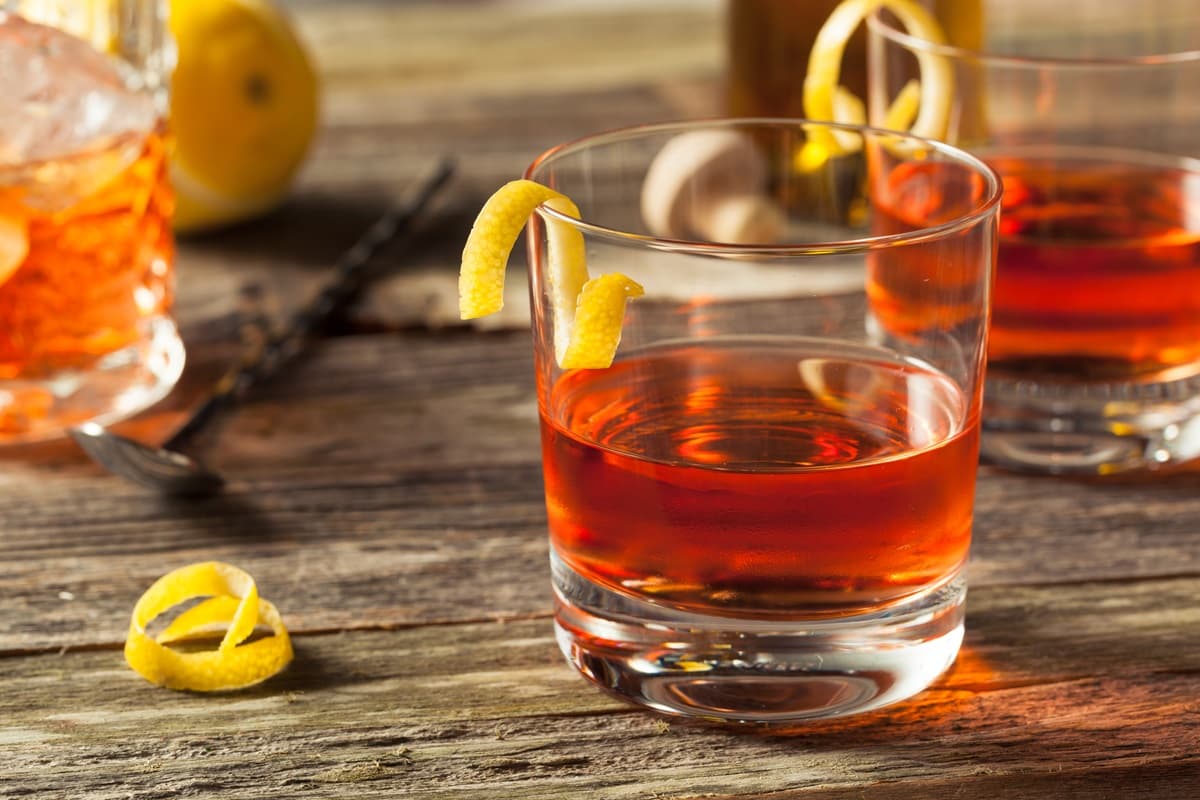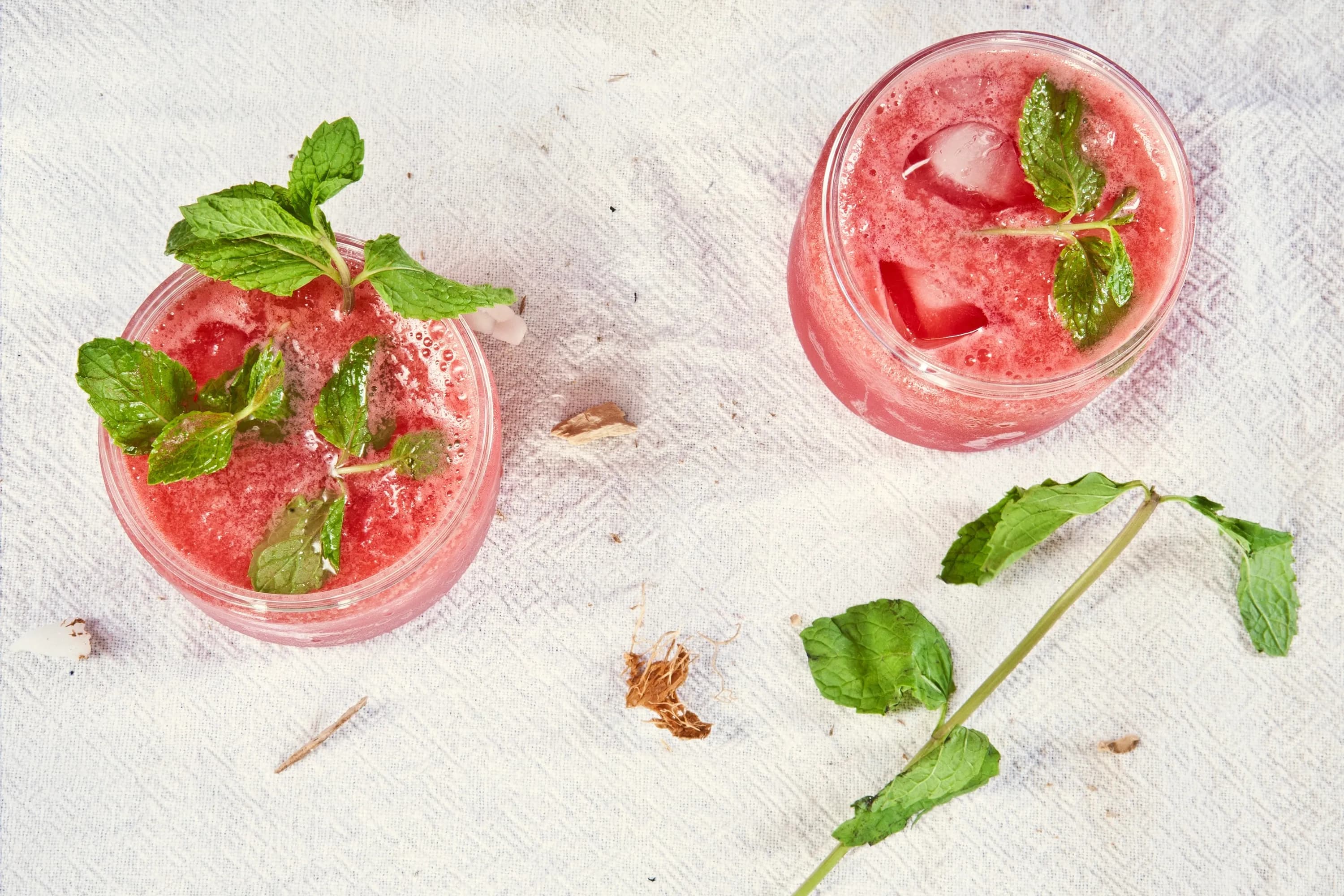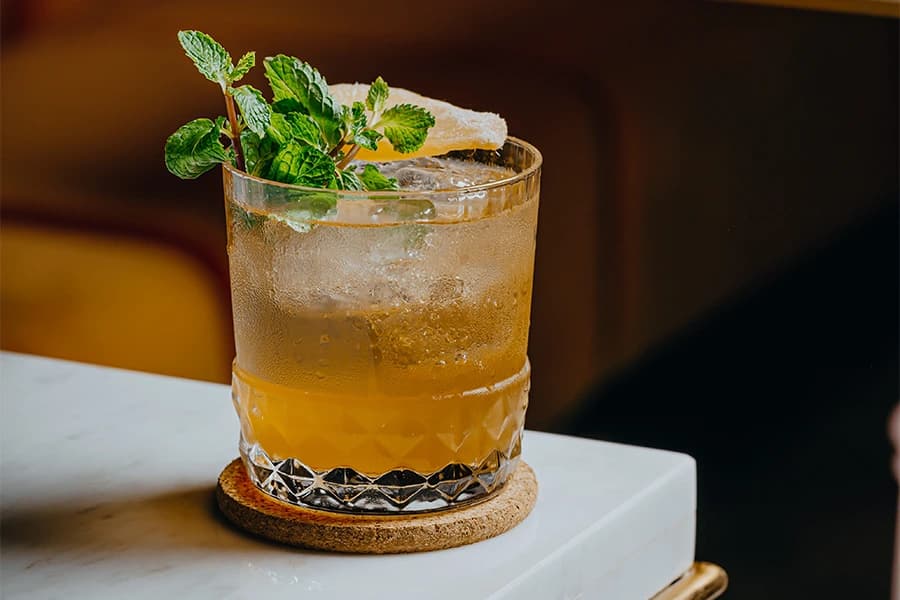The Sazerac Cocktail
The Sazerac cocktail, New Orleans’ official drink, is a time-honoured classic similar to the old fashioned that has been sipped for over 100 years. Traditionally made with rye whisky or brandy, it is enhanced with bitters, sugar and a faint absinthe rinse. Traditionally served without ice, in a chilled, heavy-bottomed glass, the concoction is proliferated into modern cocktail menus.
Ingredients
Serves1- Check off ingredients
- 30mL rye whisky
- 1cube sugar
- 3mL Peychaud’s bitters
- 5mL water
- 5mL absinthe, for rinsing
- 1for garnish lemon peel
- Ice cubes
Method
- Step 1
Chill an old fashioned glass before pouring absinthe into it and swirling to fully cover the inside, before discarding any excess, leaving only a fragrant film.
- Step 2
In a mixing glass, place the sugar cube, muddle the bitters and water until the sugar is completely dissolved into syrup.
- Step 3
Add the whisky before filling with ice and stirring thoroughly with a bar spoon for around 30 seconds to ensure that it is sufficiently cooled and diluted.
- Step 4
Strain the drink into the absinthe-rinsed glass and pour the fragrant oils from a lemon peel over the drink and add it as a garnish.
Tips & Suggestions
Frequently Asked Questions
What is the difference between a sazerac cocktail and an old fashioned cocktail?
What is a fun fact about the sazerac cocktail?
What spirit is best for the sazerac cocktail?
You may also love these
Rate This Cocktail
If you love this recipe then tab a star to rate it.







